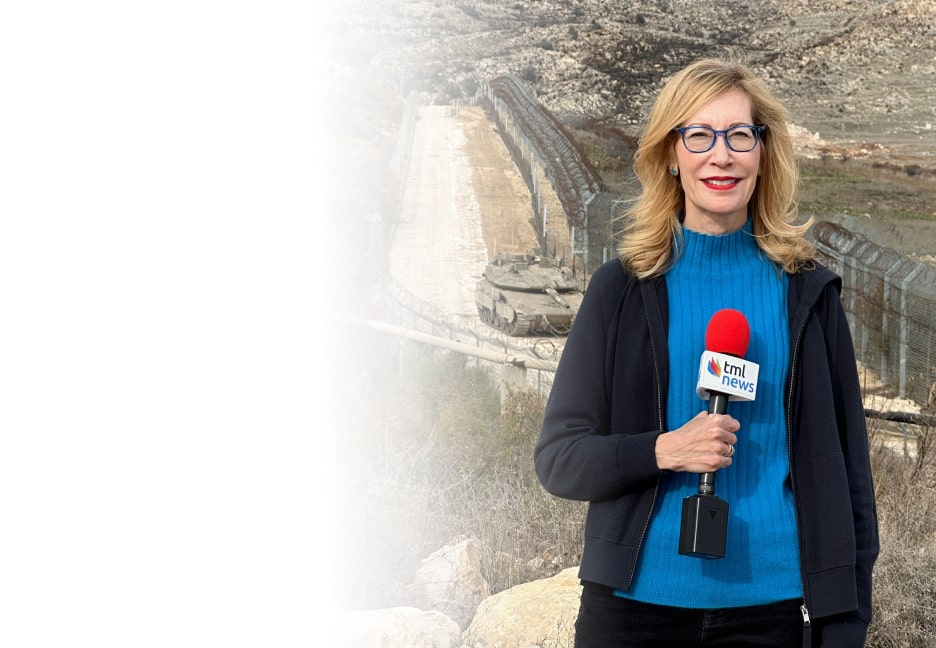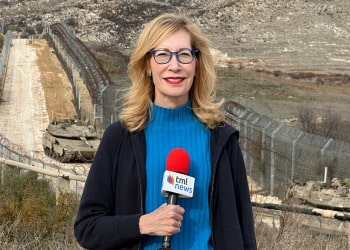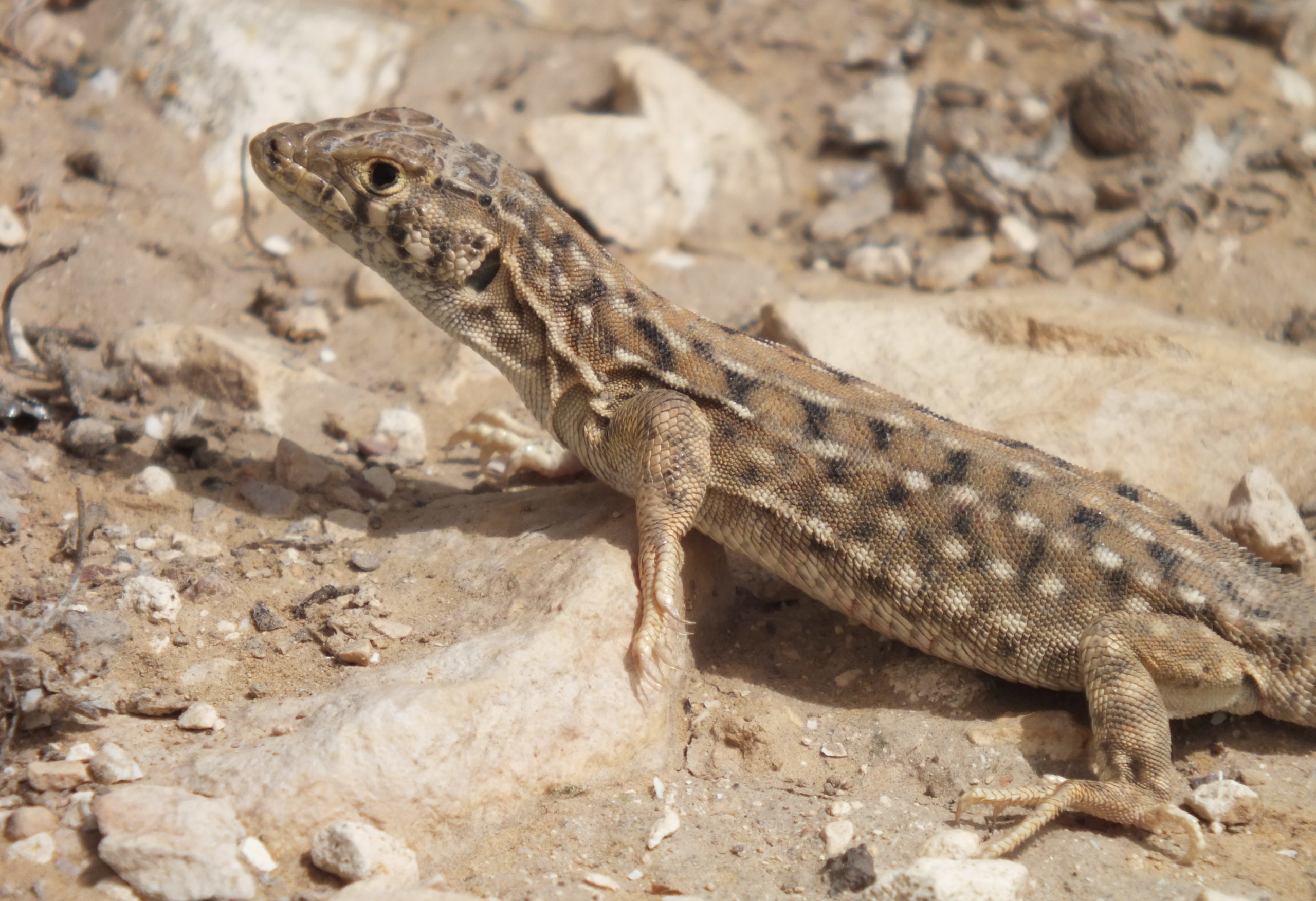Development in desert region threaten species, including some found in no other country
They sometimes have six legs, come in a variety of colors, are often slimy, and creep most people out … and experts say we can’t live without them.
The Negev Desert may appear to be devoid of activity, but it is a bustling place, full of insects, spiders and reptiles such as the desert viper. For such a small space, Israel’s southernmost region packs a powerful biodiversity punch with a multitude of species, some of which are endangered and/or endemic to Israel.
However, with continued focus on developing the country’s periphery, the increase in human activity in the region threatens entire ecosystems. If no action is taken to protect the environment, future Israelis will not be able to experience the country’s unique nature.
In an article published in the Journal of Arid Environments last month titled “Diversity of ground-active spiders in Negev desert habitats, Israel,” lead author Yael Lubin of the Mitrani Department of Desert Ecology at Ben-Gurion University of the Negev describes how they found the most spiders, including specific kinds of ground and jumping spiders, in what seemed an unlikely place: the sand dunes.
“I was surprised at the abundance in [there] because it is a harsher kind of habitat than [in other parts of the Negev],” she told The Media Line. “What explains this is the [large] amount of species there that only occur and thrive in the sand dunes.”
These spiders and other insects have “special sand digging tools” that allow them to make burrows which do not collapse in the face of continuous digging.
“If you’ve tried to dig a [deep] hole in sand, you find that it is nearly impossible,” Lubin says.
She adds that these unique features of the insects and spiders can also be found in their counterparts in the loess plains, another part of the Negev, which is composed of substrate, a delicate mix of clay and sand.
These especially unforgiving areas of the Negev, where only certain insects and spiders can thrive, are under stress.
“Both the sand dunes and the loess plains are threatened by development and human activity because they’re limited in area and they’re being heavily used by people,” Lubin says. “From the conservation point of view, my take-home message is that these two habitats need to be better protected.
“It’s not just about losing one group of animals,” she continues. “When you lose small organisms like spiders, you also lose everything that eats them, from lizards and snakes up to birds and animals.”
This holiday season, give to:
Truth and understanding
The Media Line's intrepid correspondents are in Israel, Gaza, Lebanon, Syria and Pakistan providing first-person reporting.
They all said they cover it.
We see it.
We report with just one agenda: the truth.


This has devastating implications for people as well.
“If these habitats are destroyed here, it’s a loss for generations of Israelis who will not be able to appreciate the nature of the country.”
Dror Hawlena, a professor at the Hebrew University of Jerusalem who specializes in the functional ecology of food-web dynamics, particularly in desert habitats, says that development also restricts the ability of some species to move freely between where they eat and where they rest, a death sentence for many of the animal groups and other parts of nature.
“Habitat fragmentation has become a huge problem in the Negev,” he told the Media Line. “It is increasing very rapidly due to infrastructure development.”
An example of this is the construction of the train that will run to Eilat, which will break up areas animals pass through and could divide the species into smaller groups.
“By cutting the population off, it can suffer from all kinds of problems that small populations suffer from, like inbreeding and all kinds of genetic problems,” Hawlena says.
Many species live only in these unique ecosystems that define Israeli nature
However, loss of habitat is not the sole factor behind the demise of any animal group.
When humans come, generalist species that can live anywhere come along with them and threaten the specialized species that were originally there.
What is known as the Be’er Sheva fringe-fingered lizard (Acanthodactylus beershebensis), which is unique to Israel, is a prime example of this, Hawlena explains.

Be’er Sheva fringe-fingered lizard (Acanthodactylus beershebensis), March 24, 2012. (Boaz Shacham/Wikimedia Commons)
During the 1990s, cattle egrets, a generalist species of heron and a predator of the Be’er Sheva lizard, started to call parts of the Negev home. These birds need tall trees to nest, something usually lacking in the desert. They found these in the maturing trees of old kibbutzim, for example, Revivim. The birds go into the natural habitat of the lizard for food and return to the kibbutz for rest and water.
“They are much bigger and more efficient predators than the other predators,” Hawlena says. “This bird alone can destroy the lizards.
“We did a small study … and found that for breakfast each egret, which can only live when there are enough human settlements around, eats four to six Be’er Sheva lizards a day. If there are 200 [birds], you can understand the impact,” he adds.
The professor says that in addition to the responsibility Israelis have to not destroy quintessential Israeli nature, its destruction could hurt financially.
“Many of the species live only here and this is a unique ecosystem that defines Israeli nature. Personally, I’m very proud to show visitors the ample diversity that excites ecologists from around the world,” Hawlena says. “If this is lost, we will also suffer economically with the potential loss of tourists at a time when eco-tourism is gaining popularity.”
He argues that a long-term plan is necessary to conserve the Negev’s biodiversity.
“People are pushing development due to immediate need, without thinking about the future consequences,” Hawlena says.
He says large and unified nature reserves are needed to preserve the species.
“If we have small reserves that are not connected and are not big enough to support these populations, then without seeing it [happen], even though it will still look natural or semi-natural, we will lose most of the species that we have,” Hawlena says.
From insects and all the way up the food chain, the uniqueness of the Negev and the future of Israeli nature depend on it.